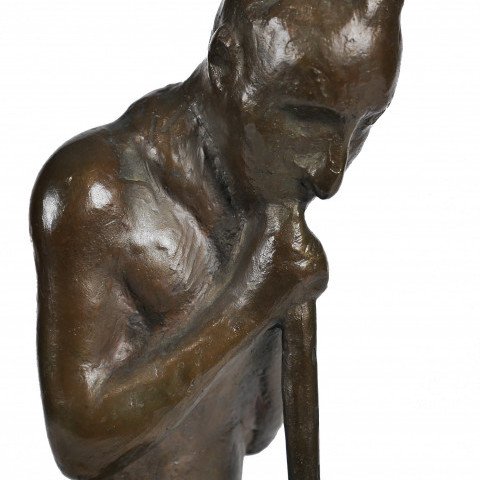Born in Ashland, Ohio, Edwin Deming was an early illustrator and painter of the American West where he traveled among several Native American tribes. He had grown up with Sac, Fox, and Winnebago playmates in western Illinois and later lived among Native Americans for thirty-one years.
He was committed to depicting the unspoiled Native American, a mission he perceived as trying to make amends for corrupting their culture. It was said that "No painter knew more about the American Indian--his life, culture, and religion" (Harmsen Western Art).
When he was a teenager, he traveled West by train and stagecoach to sketch the Indian territory, but his parents, intent on "practical" pursuits, sent him to Chicago to study business law. However, he determined to be an artist, so he sold all his possessions to earn money and enrolled at the Art Students League in New York City. He also studied at the Ecole des Beaux Arts in Paris for a year with Gustave Boulanger and Jules Lefebvre.
From 1885 to 1887, he painted cycloramas and then made his first trip West in 1887. In 1893, he and artist DeCost Smith traveled West for Outing Magazine to write about and illustrate life among the Sioux and Crow Indians. Frederic Remington joined them on part of that illustration assignment.
Subsequently, Deming spent three decades living with Native Americans including the Apache and Pueblo Indians in the Southwest and the Umatillas in Oregon. He made occasional trips to New York where he married artist Therese Osterheld, and they raised six children in the West. The Blackfeet Indians adopted the entire family and gave him the name of "Eight Bears." When the family returned to New York City, the family's home and studio in Greenwich Village was called "The Lodge of the Eight Bears."
He teamed with his artist-wife to write and illustrate a series of children's books, and he illustrated another children's book by his daughter, Alden. During World War I, he was in the camouflage department at Camp Benning, Georgia, and he died in New York City in 1942. Indeed his career indicated that he had followed the advice of Teddy Roosevelt "to paint Indians, as you know them". . .
Source: askart.com

